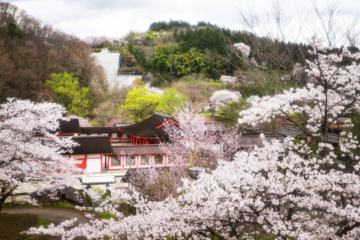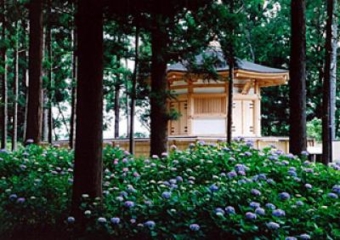MODEL COURSE
Mizusawa Esashi Station
Historical Park Esashi Fujiwara no Sato

A vast historical theme park of approximately 20 hectares where you can follow the path of the Oshu Fujiwara clan and experience the history and culture of Michinoku.
Based on rigorous historical research, we have fully recreated the castle fences of ancient Tohoku, Toyota-kan, the residence of Fujiwara Kiyohira, the government offices of the Oshu Fujiwara clan, the Kara Imperial Palace, the residence of Hidehira, and the Golden Hall, the symbol of golden culture. .
It is also known as a filming location for numerous TV programs and movies, including taiga dramas.
We also hold regular performances of the local performing art "Esashi Deer Dance" (every Sunday from late April to mid-November). (Two performances a day 11:00, 14:00) Groups performing regularly in 2020
Tateyama Historical Park (Iwayado Castle Honmaru Ruins)

The castle ruins of a powerful family that ruled this region since ancient times. It is said that Fujiwara Tsunekiyo and his son Kiyohira used it as a fortress in the late Heian period. In addition, an octagonal hall building, Nisei-in (Buddha statue preservation), was built as a facility to honor the achievements of the father and son Tsunekiyo and Kiyohira. You can enjoy the seasonal scenery with cherry blossoms, hydrangeas, and maple trees.
Nisei-in is usually closed. Open twice a year (May and August).
Former Iwayado Kyoritsu Hospital and Mukoyama Park

The former Iwayado Kyoritsu Hospital was built in the 7th year of the Meiji era as the prefecture's first hall of Western medicine, ``Iwayado Kyoritsu Hospital.''
This pavilion-style building, which uses Western-style techniques, is the motif of Kazuo Kikuta's ``Kane no Naru Oka,'' and the melody of ``Kane no Naru Oka'' plays every morning and evening.
Mukoyama Park, located on a hill nearby, has a spectacular view, and within the park are the former Goto family residence, which is a nationally important cultural property, and the Yasunari Kawabata Literary Monument.
Mizusawa Esashi Station

![[Oshu Pretaku] Esashi Historical Park Tour](https://iwatetabi.jp/wp/wp-content/uploads/2024/03/90.jpg)
![[Oshu Pretaku] Visiting the scenic spots of Lake Oshu](https://iwatetabi.jp/wp/wp-content/uploads/2024/03/146-339x240.jpg)
![[Oshu Pretaku] Aterui no Sato history tour](https://iwatetabi.jp/wp/wp-content/uploads/2024/03/1039-320x240.jpg)
